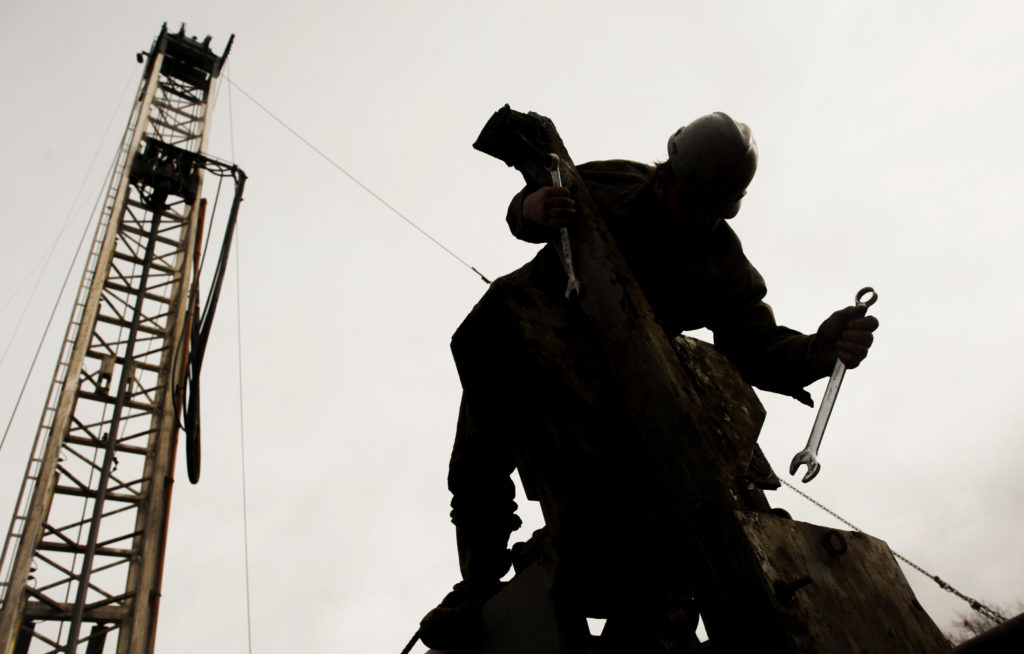
When Stacey Olson got her first energy job 29 years ago, she was a “company man.” That’s what Chevron Corp. called its representative on an oil rig staffed mostly by contractors.
The title no longer exists at Chevron, where Olson is now a top executive, but she still sees plenty of challenges for women in her industry.
Globally, the oil and gas sector ranks second only to construction as the worst for gender equality, according to a study by Boston Consulting Group last year. Olson, vice president of Chevron’s Appalachian Mountain Business unit, says the root of the problem lies in education, where too few women take science, technology, engineering and math classes.
“STEM fields have not seen the advance as some of the other professions, medical, and legal,” Olson said in an interview in Houston.
Just 18 to 19 percent of bachelor degrees in engineering, computer science and physics are awarded to women, according to the non-profit National Girls Collaborative Project. While there’s no difference in the academic ability of girls and boys in such subjects, intentional or unintentional messaging from parents, teachers and the media can put off girls from pursuing science and math, said Erin Hogeboom, director of strategic partnerships at NGCP.
“So much of this is embedded that it’s going to take a real revolutionary way of thinking about it to actually make a difference,” she said.
For Chevron, the solution is to invest in a multitude of programs and networks that encourage teenage girls to pursue a STEM education while also supporting them during college and then hiring them as graduates. But such an approach could take at least a generation — time the industry doesn’t have as issues such as sexual harassment and equal pay come get more attention than ever before.
Despite high-profile appointments, such as Susan Dio becoming chairman of BP Plc’s American business this year and Gretchen Watkins due to take over as head of Royal Dutch Shell Plc’s U.S. unit in 2019, the U.S. only has one female CEO of a major oil company: Occidental Petroleum Corp.’s Vicki Hollub.
In the latest “Forty Under 40” list from Oil and Gas Investor magazine, there are 37 men and just three women. A spokeswoman for the publication said it holds an annual event for women in the industry and publishes a list of the 25 most influential women in energy.
In oil and gas worldwide, 22 percent of workers are female, according to the BCG study. An even smaller percentage progress to executive level, showing that the problem isn’t simply confined to colleges, and that energy companies have work to do on how they manage and promote female employees.
A key reason for the lack of progression is that many women “have failed to accumulate the critical experiences that their male colleagues have,” such as working in remote and difficult locations, the BCG study said, something Olson acknowledges.
“I don’t think a lot of companies would assume a mother with three kids could take a role in Nigeria or Thailand,” said Olson, whose career has taken her to both countries. It’s critical for companies to “give women the stretch assignments and the opportunities that really allow them to show their full capability.”
The ratio of women to men at Chevron has been improving but real change may take a long time. Chevron’s goal isn’t to hit targets but to “institutionalize the process and institutionalize the progress,” said Pat Yarrington, Chevron’s female chief financial officer of 10 years.
Why is diversity so important for oil companies? “Simply said, it’s better decisions,” Yarrington said. “People of different backgrounds, male and female, people come with different experiences, they come with different views, different lenses on risks and probabilities and solution sets.”
Recommended for you
